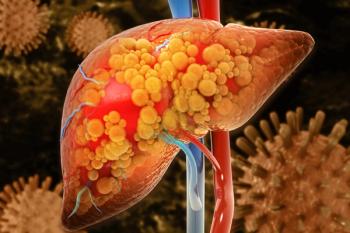
NICU Nurses More Likely to Miss Tasks Due to Increased Workload
Key Takeaways
- Traditional staffing metrics fail to capture the full scope of nurse workload, impacting neonatal care quality and safety outcomes.
- Subjective workload ratings, measured by NASA-TLX, significantly influence the likelihood of missed care in NICUs.
Increased workload among nurses in the neonatal intensive care unit (NICU) may reduce the quality of care for individual infants, as certain tasks are more likely to be missed.
Nurse workload in the neonatal intensive care units (NICUs) may cause nurses to miss essential care linked to neonatal safety outcomes, according to a new study published in
Nurse workload is considered to be the amount of performance required to carry out an array of nursing activities.1 However, traditional objective measures like patient-to-nurse staffing ratios and patient acuity metrics fail to fully encompass the experiential aspects of a nurse’s workload. Thus, affecting the degree of accuracy and consistency with which a nurse can deliver all necessary patient care without errors, or their process reliability. Whereas staffing might relieve some of the nurses’ workload, the study authors suggest interventions solely focused on staffing ratios to close the quality care gap may not produce the desired results.
The relationship between the staffing ratios and infant acuity looks “highly influential ... [but] that's only part of the story. When we include nurses' subjective workload ratings in the model, the ratio effects are not as pronounced,” lead author Heather L. Tubbs-Cooley, PhD, told Medpage Today.2
This cross-sectional study took place in 10 level 2, 3, and 4 NICUs. The subjective workload was assessed using the self-reported National Aeronautics and Space Administration Task Load Index (NASA-TLX). The scores measured cognitive or mental demand, physical demand, temporal or time pressure demand, and degree of required effort, with a score for each measure on a scale from 0.2 to 20 and an overall workload score that could average anywhere between 0.8 and 80. Nurses were asked to submit the NASA-TLX approximately 90 minutes before their shift ended. Of the 257 nurses included in the final analysis, 200 nurses submitted 75% or more of the expected data, and 163 submitted 100%.1
The main outcome—infant acuity or missed nursing care of 16 essential nursing care practices for individual assigned infants—was auto-calculated every 4 hours from nurses’ documentation in electronic health records. Clinical indicators like ventilation mode, frequency and mode of feedings, number and type of infusions, presence and type of indwelling catheters and drains, and procedures were incorporated into the infant acuity score.
Infant Acuity Influenced by Nurses’ Process Reliability
Overall, the nurses included in the final analysis reported on the care of 1468 infants over the course of 5403 shifts. Out of all the nurses, 98% were female, and the mean years of NICU experience was 5.7. The majority of nurses (n=220) held a baccalaureate degree or higher, whereas only 58 nurses held a specialty certificate in neonatal intensive care nursing.
The mean shift-level infant-to-nursing-staff ratio was 2 to 1, ranging anywhere from 1 to 4 infants per nurse. The mean NASA-TLX score reported on any given shift was 48.4, with a max reported score of 80. The most frequently missed tasks reported were hourly intravenous line site assessments and infant assessments. The least frequently missed task was the administration of human milk according to safety protocols. The median infant acuity score was 52.1, with scores ranging from a low of 5.5 to a high of 130.8.
The analysis showed that 2 of the 17 missed care items showed a significantly worsening effect in a 2 to 1 ratio vs a 1 to 1 ratio. However, all 17 subjective workload models were associated with a higher NASA-TLX and likelihood of missed care. For example, a 5-point increase in the NASA-TLX score was associated with a 1.27-fold increase in the odds of any missed care for an individual infant during a shift.1
“We have systematically and empirically demonstrated negative associations between staffing ratios of 3 to 1 or higher and quality of care in 2 independent samples, even after adjusting for acuity and subjective workload,” the study authors explained. “Subjective workload does appear to partially mediate most effects of ratios on missed care. Nurse leaders should strive to create staffing assignments aligned with staffing standards recommended by the Association of Women’s Health, Obstetric, and Neonatal Nurses.”
The study was limited by potential selection and social desirability biases, thus influencing participant enrollment. Furthermore, the COVID-19 pandemic may have also influenced enrollment rates due to workforce stress. Demographic information from non-participants was unable to be obtained, thus limiting the assessment samples’ representativeness. The infant acuity metric also lacks psychometric validation; therefore, it is possible that reporting missed care increased nurses' awareness, potentially altering their performance.
"We recommend that health systems and commercial vendors partner with bedside nurses and researchers to rigorously test acuity-based staffing tools that account for the full range of caregiving needs before implementation,” the study authors concluded.
References
1. Tubbs-Cooley HL, Carle AC, Mark BA, et al. Nurse workload and missed nursing care in neonatal intensive care units. JAMA Pediatr. Published online October 06, 2025. doi:10.1001/jamapediatrics.2025.3647
2. Firth S. Study links heavier nurse workload to missed care in the NICU. MedPage Today. October 7, 2025. Accessed October 7, 2025.
Newsletter
Stay ahead of policy, cost, and value—subscribe to AJMC for expert insights at the intersection of clinical care and health economics.












































